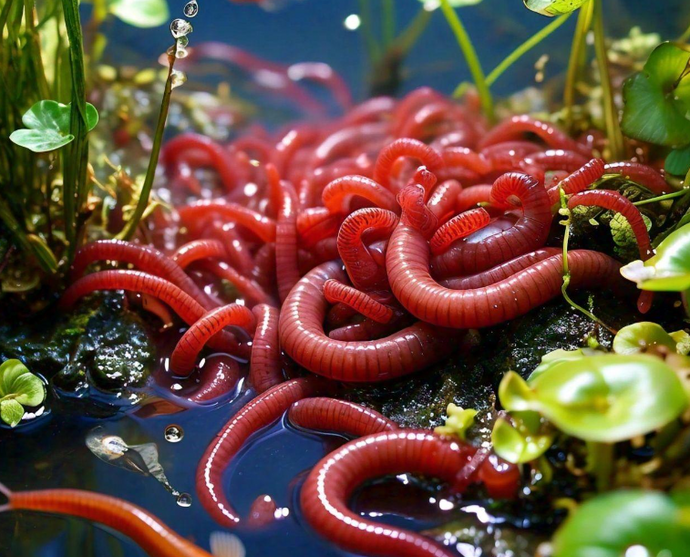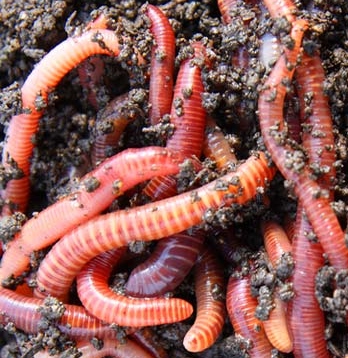Red worms: A beginner’s resource
The Duty of Red Wigglers in Sustainable Gardening
The combination of red wigglers right into sustainable gardening techniques offers an engaging approach to improving dirt health and decreasing natural waste. The implications of using red wigglers prolong past mere composting; their function in forming an extra sustainable future warrants a deeper expedition of their advantages and sensible applications.
Understanding Red Wigglers
Red wigglers, clinically referred to as Eisenia fetida, are a varieties of earthworm renowned for their role in sustainable horticulture and composting methods - red wigglers. These worms grow in decomposing raw material, making them especially reliable in transforming kitchen scraps and yard waste into nutrient-rich compost. Unlike standard earthworms, red wigglers have a greater resistance for differing moisture levels and can grow in settings with bountiful natural product
(red wiggler earthworms for sale)Classically, red wigglers are smaller than their earthworm equivalents, usually gauging between 3 to 4 inches in length. They have a reddish-brown coloration and have a fractional body structure that helps in their burrowing and feeding activities. These microorganisms are hermaphroditic, implying each specific possesses both male and women reproductive organs, which permits for effective populace growth under optimum conditions.
The environment preferences of red wigglers include wet, dark atmospheres rich in organic web content, such as compost containers or worm ranches. Their environmental duty prolongs beyond composting; they are important in freshening the soil and promoting nutrition biking, which ultimately adds to much healthier garden ecological communities. red wigglers. Understanding the biology and actions of red wigglers is necessary for those seeking to execute effective vermicomposting in lasting horticulture
Advantages of Vermicomposting
Vermicomposting offers various advantages that improve lasting horticulture practices and contribute to ecological wellness. Among the main benefits is the makeover of natural waste into nutrient-rich compost, which enhances dirt structure and fertility. The castings produced by red wigglers are packed with valuable bacteria and crucial nutrients, making them an exceptional all-natural plant food.
Additionally, vermicomposting considerably decreases garbage dump waste. By drawing away cooking area scraps and backyard waste from garbage dumps, this technique not only lessens methane exhausts-- a powerful greenhouse gas-- yet also advertises a round economy, where waste is repurposed as a resource.
One more advantage is the enhancement of dirt oygenation and water drainage (red wigglers). The burrowing activity of red wigglers creates networks in the dirt, enabling air and water to pass through even more quickly, hence cultivating a healthier root system for plants
In addition, vermicomposting can be done on a little scale, making it available for urban gardeners and those with restricted area. This technique encourages environmental stewardship and awareness, as people come to be a lot more engaged with their waste monitoring techniques. Inevitably, vermicomposting represents a sustainable, reliable, and eco-friendly strategy to horticulture that benefits both plants and the planet.
Just How to Beginning Vermicomposting
Beginning your own vermicomposting system can be a rewarding undertaking that improves your sustainable horticulture methods. To begin, pick a proper container, such as a plastic bin or wooden box, with excellent drain and ventilation. The dimension will rely on the volume of kitchen scraps you produce; a bin of 10-14 gallons typically is adequate for a family.
Next, prepare the bed linens material. Shredded paper, cardboard, and coconut coir are outstanding alternatives, supplying a comfortable environment for the red wigglers. Goal for a bed linens depth of concerning 4-6 inches, which must be wet however not soaked.
Once the bed linens is established, present your worms. Red wigglers (Eisenia fetida) are one of the most appropriate for composting. Start with approximately one pound of worms for each 2-3 extra pounds of kitchen scraps weekly.
Begin including kitchen waste, preventing meat, dairy products, and oily foods, as these can attract bugs and develop odors. Consistently keep track of the container's moisture levels and temperature level, guaranteeing it remains within the excellent variety for worm task. With these first steps, you'll be well on your way to producing nutrient-rich garden compost for your garden.
Maintaining a Healthy And Balanced Worm Container
A thriving worm bin calls for regular care and attention to preserve an optimum setting for the red wigglers. Key elements to keep an eye on consist of moisture levels, temperature, and food supply. Preserving a wetness degree comparable to a wrung-out sponge is crucial; too much water can result in anaerobic problems, while inadequate can dehydrate the worms.
Temperature level is likewise essential, as red wigglers thrive in a variety of 55 to 77 degrees Fahrenheit. Extreme temperatures can stress the worms, potentially leading to mortality. Positioning the container in a climate-controlled area or using protecting products can assist regulate temperature fluctuations.

Last but not least, oygenation is crucial. Frequently turning the bed linens and utilizing a fork or shovel can prevent compaction and advertise airflow, making certain a healthy, growing atmosphere for the red wigglers. By sticking to these techniques, gardeners can keep an efficient worm container that supports lasting gardening initiatives.
Impact on Soil Wellness
Enhancing soil health and wellness via the use of red wigglers is a fundamental element of lasting horticulture. By taking in natural matter, red wigglers break down complicated products right into less complex substances, a process recognized as vermicomposting.

(red worms)Studies have revealed that dirts enhanced with worm spreadings show increased microbial activity and enhanced fertility, causing greater plant yields. By incorporating red wigglers into gardening methods, garden enthusiasts not only enrich their soil however likewise add to an extra lasting farming system, emphasizing the interconnectedness of soil health and environmental stewardship.

Final Thought
In final thought, red wigglers substantially add to sustainable gardening through their effective vermicomposting practices. Their capacity to transform natural waste right into nutrient-rich garden compost improves soil fertility and supports a diverse microbial ecosystem. Their burrowing activity improves soil oygenation and water retention, profiting plant health and wellness. By promoting waste decrease and promoting a circular economy, red wigglers become necessary elements in environmentally friendly horticulture efforts, underscoring their important role in ecological sustainability.